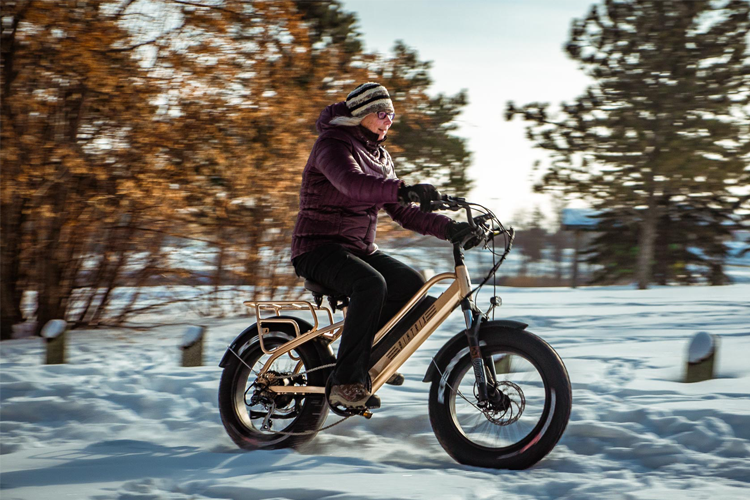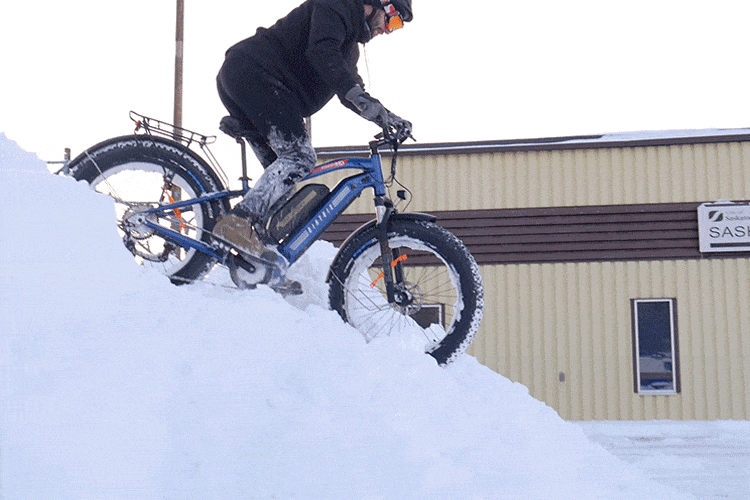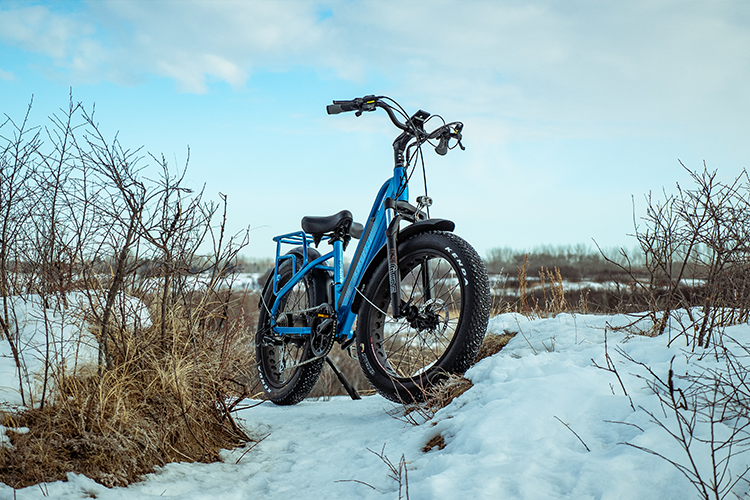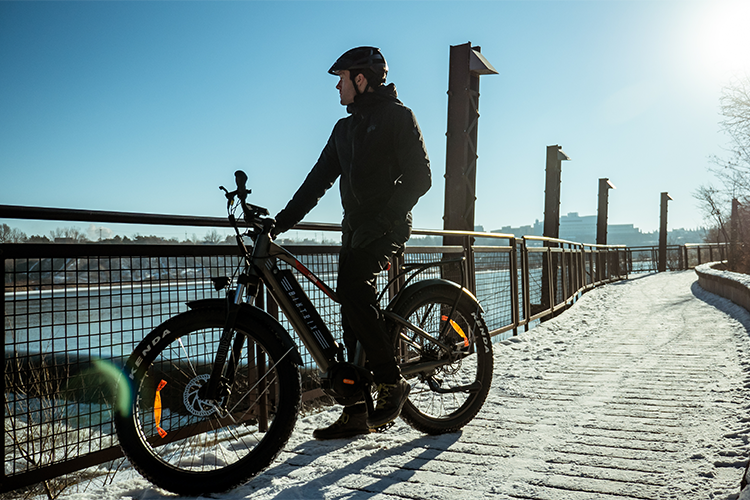
Fat tire electric bikes open the door to all sorts of adventurous off-road riding. And one of the most fun ways to put them to the test this winter is by plowing over and through a white, snowy landscape.
But riding in snow is unlike just about any other type of riding you can do on an e-bike.
To help explain the important things to know about riding electric bicycles in the snow, I turned to Canadian resident snow-riding expert and friend Roshan Thomas.
Roshan is also the founder of , a popular electric bicycle manufacturer with a wide range of powerful snow-ready electric bicycles, as well as models for other types of riding.
So he knows a thing or too about getting down and dirty in heaps of snow.
Riding e-bikes in the snow
When it comes to riding an electric bicycle in the snow, the type of bike can make a lot of difference.
Both hub motors (an electric motor in the center of the bike wheel) and mid-drive motors (an electric motor at the pedals) can be used for winter and snow riding. However, mid-drive motors provide more torque than hub motors. You can drop into low gear for extra torque from a mid-drive, but a hub motor can often get bogged down in thick, wet snow.
For that reason Roshan usually recommends a mid-drive e-bike for snow riding, at least when the snow gets deep. He also tells people to avoid e-bikes with just a front hub motor. They can lose traction much more easily than rear hub motors.

Some mid-drive motors provide modest power, while others including the Bafang Ultra motor can put out over 1,000W of power and really conquer thick snow.
Next, fat tires are of course better than typical mountain bike tires, since they tend to ride up on top of the snow rather than knifing into the snow. But there’s more nuance to it than that. As Roshan explains, tire pressure has a big impact on how the fat tires handle:
A common 26″x4″, or 26″x4.8″ or 27.5″x4″ fat tire works amazing in the snow because you can run these at very low pressures. I find that 5-20 PSI makes the rubber just float on the snow. For riding conditions where there is underlying ice, it’s best to get these tires studded.
Many winter tires come with optional studs that can be installed when conditions get icy.

While dual motor hub-driven e-bikes might seem like good snow candidates, they can sometimes require more skill to ride in loose conditions. The AWD nature can cause both wheels to break free, and the lack of traction control can require expert handling skills to keep the bike upright while both wheels are slipping.
Roshan also recommends a number of accessories that can help make snow e-biking more enjoyable.
Pogies or bar mitts help riders keep their hands warm even while wearing thinner gloves, meaning riders have better dexterity to control buttons, shifters and brakes. Heated jackets and gloves can make a big difference in temperatures below -20ºC (-4ºF). And a dropper seat post can help make quick seat adjustments while riding when the terrain suddenly changes. As Roshan explains, “a dropper seat would work especially well in the winter as you can adjust rider seat height on the fly. Even a basic one like a Kindshock dropper seat post would be better than not having one.”

E-bike brakes in the snow
There are specific braking safety concerns to watch out for in the winter, and especially in the snow.
Stopping distances are longer in the winter, and riders should always take that into account.
Mechanical brakes are even more susceptible to winter effects. Water and snowmelt can enter brake housings and freeze, further reducing the braking power.
Roshan recommends squirting a few drops of deicer into the housings of mechanical brakes every few weeks, or opting for an e-bike with hydraulic brakes.

Winter and snow e-bike maintenance
In addition to typical e-bike maintenance, there are a few extra things to look out for in the winter.
After riding, Roshan recommends drying off the bike as much as possible. Using compressed air to blow off the bike is even better, if possible. You just don’t want water – especially salty water from road salt – to sit on the bike and cause corrosion.
Wet lubing the chain is also even more important in the winter for the same reason.
You might be surprised just how much snow a bike can pick up and carry.
The battery should also be removed from the bike and stored indoors. Batteries should not be charged in below-freezing temperatures, and it is best to start a cold ride with a room-temperature battery that has been sitting indoors.
As Roshan puts it:
“Batteries like temperatures that humans like. This means that when it gets too cold or too hot, the internal resistance goes up and the range diminishes. Plan your ride accordingly.”

Beginner advice
Lastly, Roshan left me with a few tips for beginners that are planning to do their first winter and snow riding on an e-bike.
He recommends starting slow, taking it one step at a time. Start with short rides and commutes before trying longer marathons. Stick to slower speeds as you get acclimated to the new style of riding.
And consider starting out with snow riding by turning off pedal assist. Biktrix bikes have a “Level 0” for pedal assist, which leaves the throttle active but deactivates pedal assist. That can allow riders to blip the throttle to get moving in snow, then practice riding like normal without unexpected assist. The hand throttle can always be used when extra assist is needed. Then once riders feel comfortable handling the e-bike in the snow, they can increase the pedal assist slowly by bumping up the levels.
Ultimately, the name of the game is to get out there and have fun this winter. Having fun is what e-bikes are all about, particularly fat tire e-bikes.
Ride safe out there and stay warm!
Subscribe to Electrek on YouTube for exclusive videos and subscribe to the podcast.
Author: Micah Toll
Source: Electrek



